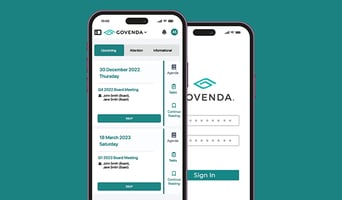Employee Representation on Boards: Could History Repeat Itself?

A Rich History
Germany is often cited when the topic of employee representation on boards is broached. “There is no one model for worker representation on boards,” continues Harvard Business Review. “Board-level employee representation appears to be quite fashionable, but so far remains mainly a European phenomenon with Germany often seen as the role-model.” It is important to acknowledge the corporate governance model of Germany who currently requires 50 percent employee representation on supervisory boards of companies who employ 2,000 or more. “Typically, German companies have two boards: an executive board composed of the CEO and other senior executives, and a supervisory board representing both workers and shareholders, fulfilling a similar role to corporate boards in the US,” says Vox. These employee representatives are also elected by the workers themselves. “Companies are also required to allow works councils elected to represent workers in day-to-day disputes over work conditions, layoffs, etc.,” continues Vox. “These councils have a variety of legal rights requiring companies to consult them.” This model of “co-determination” began shortly after the end of World War II.
Germany’s co-determination board model that allows for employee representation on boards began at the end of World War II as the most heavily industrialized part of the country was controlled by the British. They were inclined to nationalize German industry. However, negotiations with company owners gave workers equal board representation, which was favorable to the process of nationalization. In 1976, the Co-Determination Law was enacted which requires almost all German firms of more than 2,000 employees to have half their supervisory board chosen by an employee vote.
The American Model
The American board governance model has similar roots to Germany’s co-determination model with entities much like work councils that were often labeled as employee representation plans, company unions, and industrial democracy. “They came into vogue later than Germany, but constituted a major movement from about 1915 through 1935, when Congress put a stop to them,” reports Justin Fox of Bloomberg. Employee board representation was halted for a variety of reasons including the speed at which corporations grew far outstretched the size of their employee base. The American workforce also included a great number of immigrants speaking numerous languages, which made worker organization difficult.
However, strides were made to include employees on boards of directors, especially on supervisory committees. The first significant business giving workers a voice occurred at Filene’s Boston department store. Company president Edward Filene enlisted a committee of employees to help with insurance plans and a medical clinic which soon grew into the Filene Cooperative Association. The Filene Cooperative Association ran benefit programs and had the right to change any store rule by a two-thirds vote. The nation’s second-largest steelmaker in 1915, Colorado Fuel and Iron Co., enacted the Rockefeller Plan after efforts to break a miners’ strike led to the Ludlow Massacre. The Rockefeller Plan devised a system of elected employee representation on boards. Fox goes on to state that historian Greg Patmore says the 432 U.S companies had employee representation plans covering almost 1.4 million workers.
However, unionization began to take hold and employee representation on boards became an archived practice. The National Industrial Recovery Act of 1933 guaranteed the right of workers to form and join unions. It also allowed for the continued existence of company unions and employee representation plans. Furthermore, employee representation on boards continued to decline until recent politicians proposed bills to make employee representation on boards a mandatory practice.
History Repeats Itself
In March 2018, Senator Tammy Baldwin introduced legislation to give workers a seat at the boardroom table. The Reward Work Act aims to improve disclosure of repurchases and requires public companies to give workers the right to directly elect one-third of their company’s board of directors. Americans largely are in support of this idea. “A poll of more than 3,300 American likely voters by Civis Analytics finds that the majority (53 percent) would support allowing employees at large companies to elect representatives to those companies’ boards of directors, thus giving employees a direct, democratic say in how the company is run,” reports Vox.
Similarly, Senator Elizabeth Warren proposed the Accountable Capitalism Act in August that would require corporations with more than $1 billion in annual revenue to have at least 40 percent of board members elected by employees. She actively cited Germany’s co-determination corporate governance model as inspiration for the bill.
A Corporate Governance Conundrum
The question still remains: should boards include an employee representative? Jim Prior, author, and global CEO doesn’t think so. “Yes, corporate leaders should listen to employees but the role of the board should be to identify and act on situations where leaders fail to listen, not to do the listening for them,” says Prior. Most critics of this model feel that the separation between governance and leadership is blurring. Boards of Directors often oversee executive leadership, mitigate risk and compliance, and govern in the best interest for the company as a whole. In contrast, executives lead and oversee their workers. “The proposal betrays a fundamental misunderstanding of how companies work in its failure to distinguish between leadership and governance,” continues Prior.
Germany’s co-determination model also falls under harsh criticism. Critics say the model can stifle innovation, make companies less efficient, and protect certain entrenched labor constituencies. Sam Bowman, executive director at the Adam Smith Institute fear that boards may result in saving jobs instead of making hard decisions. “Worker representatives allied with a corrupt CEO to protect jobs in a failing plant in exchange for supporting the CEO in other areas. It also meant that the board could not properly oversee the CEO’s actions,” says Bowman. Serving on a board of directors is also a great responsibility, usually enlisted to individuals with years of experience. Employees of companies may not be adequately qualified for this lofty job.
However, the benefits seem to outweigh the negative blowback of employee representation on boards. Germany’s model is often cited to raise employee wages and lower unemployment. “…They do seem to have a positive effect on productivity, around to the two most recent studies on that question,” reports The Washington Post.
A study conducted by Bernd Frick found that German firms saw a 25 percent spike in productivity and found that employee board councils increase wages. This is echoed by Stefan Stern, director of the High Pay Centre, “Something is too often lacking from the conversation at the board level: an eyewitness account from the shop floor.” The interest in having employees consult on issues that affect their lives and well-being at companies is increasingly becoming more attractive. Francis O’Grady, general secretary of TUC says, “Workers have a clear interest in the long-term success of their company, unlike many shareholders…Their participation would encourage boards to take a long-term approach to company success.”
Whether you agree or disagree that employee representation is a positive concept, Harvard Business Review has found that it does not hugely impact corporate performance. “Beyond specific studies…not surprisingly mainly based on studies in Germany- shows that there is no clear correlation (let alone casual evidence) between the presence of board-level employee representatives and better or worse company performance.” Because of this conclusive evidence or lack thereof, it is important for boards of directors to do what is in the best interest for their companies.
Other posts you might be interested in
View All PostsSubscribe to email updates
Get updates delivered directly to your inbox.


